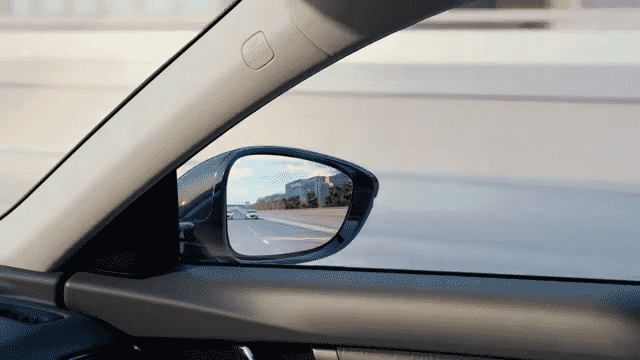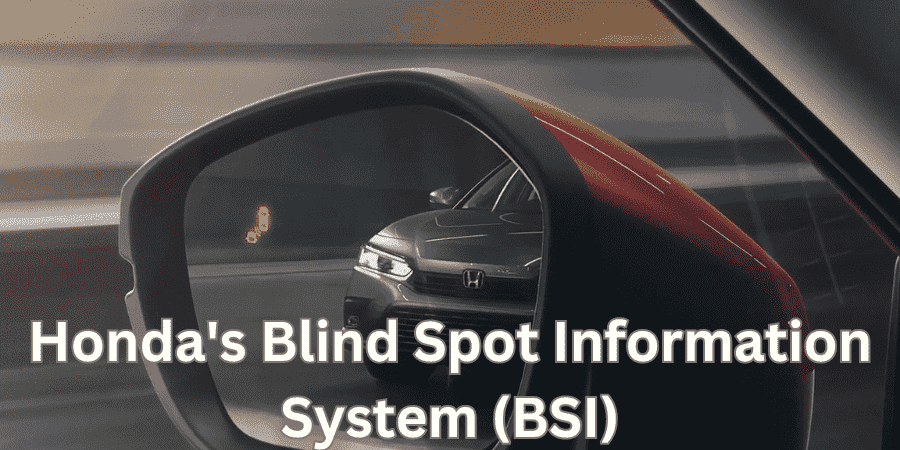Honda’s Blind Spot Information System (BSI) uses radar to monitor 10 feet beside and 15 feet behind, enhancing driver awareness. Driving has become much safer today than in the past due to the development of technologies that are incorporated into cars. Nevertheless, one difficulty that has always plagued ages is the problem of blind spots. Blind spots as a concern are evident, especially when you are shifting from one lane to another on a highway or when you are driving within urban areas. Do not worry anymore because Honda has developed a tool called the Blind Spot Information System (BSI) that can help ease your driving experience. In this guide, we will explore everything that Honda BSI entails, its function, and why it is crucial in today’s Automobiles.
What is a Blind Spot?

Definition and Explanation
A blind spot is a region near a car that a driver cannot see through the mirrors or outside their line of sight. They are hidden in a particular zone that may cause a dangerous situation, especially when turning on or merging highways.
Why Blind Spots are Dangerous
One of the key causes of many accidents is blind spots, especially during a lane change. These areas are also known as blind zones, and given that the drivers cannot see a car next to them, they might end up running into it and causing an accident when the car could have been seen if it was in the driver’s field of vision.
What is Honda’s BSI?
Honda BSI can be described as one of the new-generation systems used in vehicles that assist drivers in identifying vehicles within blind zones. It supplements potential blind spots the driver might have using sensors and cameras and notifies the driver when it detects another vehicle in a dangerous proximity.
How BSI Enhances Driver Safety
Through the visual and audio signals, concepts of Honda’s BSI support choosing the right actions on roads. It is useful because it’s as if you can see with an additional pair of eyes as you are informed of your environment’s state, including blind spots.
How Honda’s Blind Spot Information System Works

Sensors and Detection Mechanisms
The system uses sensors mounted at strategic points, either on the side mirrors or the rear part of a car, such as the bumper. These sensors keep an eye on the zones beside your car and properly identify moving cars in their proximity.
Visual and Audio Alerts
Sometimes, when one needs to change lanes, and the system notices that there is a car in the blind spot of the vehicle, a visual signal is provided by the mirror or dashboard. Occasionally, an audio signal will also be heard, particularly if, while lane changing, there is a car in the no-zone or blind spot.
Compatibility of Other Safety Technologies
Honda’s BSI can operate in collaboration with other systems, namely, Lane Keeping Assist and Collision Mitigation Braking. The above integration offers you round coverage, thus guaranteeing that you are fully protected.
Key Features of Honda’s Blind Spot Information System
LaneWatch Camera System
Another typical feature of Honda’s BSI is called the LaneWatch camera system. The feature employs the side camera installed at the passenger mirror that provides you with a real-time view of the adjacent lane on the infotainment screen.
Radar-Based Detection
Other than cameras, Honda’s BSI employs radar to assist you in identifying vehicles out of your view. This excellent radar system is functional in poor visibility areas, such as fog or heavy rainfalls. Additionally, the comfort of SUV seats enhances the driving experience, ensuring you remain relaxed even in challenging conditions.
Visual Indicators on Side Mirrors
However, the most conspicuous component of Honda’s BSI is the light emblem on the side mirrors. These warn that any time a car is in your blind spot, it becomes easy to tell when to change lanes without putting the other car in danger.
Benefits of Using Honda’s Blind Spot Information System
Reducing Accidents and Collisions
Honda is likely to gain since the main advantage of BSI is that it has the capability of reducing accidents. The system enhances safety by notifying you of other vehicles you may not notice due to the blind spot, thus reducing the chances of an accident.
Enhancing Driver Confidence
Being aware that one’s vehicle is fitted with BSI makes one a wiser driver, and this C (Change) impacts positively on the consumers. Because of the presence of the system, you can operate the car with more confidence when changing lanes and joining other lanes.
Ease of Use and Intuitive Design
As with most HI’s, Honda’s BSI is created to be simple among its primary goals. The alerts are clear and have friendly interfaces. The system has automated software and does not necessarily need driver interference after initiating the signal to change the turn.
Honda Models Equipped with Blind Spot Information System
A List of Honda Models Featuring BSI
Honda’s BSI comes in different models, some of which include the Accord, CR-V, and Pilot. Sometimes, it is standard on upper trim levels or part of safer-forward package choices.
Differences Between Models with and without BSI
It is interesting to note that although numerous Honda models have BSI, not all do. Information concerning the two models with and without this feature would assist you in deciding on the car you need to acquire.
How to Use Honda’s Blind Spot Information System Effectively
Tips for New Users
If you have just joined BSI, begin to get used to the functioning of the alerts. The booklet also advised the driver to practice driving in the system, thus familiarizing them with it before completely relying on it during rush hour.
Best Practices for Safety
Without a doubt, you should check your blind areas, even with this system engaged. BSI is a help rather than a hindrance to careful driving. After all, just like regular car washes keep your vehicle clean, consistent vigilance keeps your driving safe.
Conclusion
Essentially, the Honda BSI is one of the most important features of today’s cars, and every driver should opt for it. It brings an added measure of safety since it assists in reducing one of the major causes of most accidents. So, if you understand how this system works and adapt it correctly, you can make your driving experience safer and more pleasant. As automotive systems develop further, innovations like Honda’s BSI will become enhanced, issuing even more coverage to drivers and other individuals in vehicles.
FAQs
What happens if the BSI system fails?
If the BSI system fails, you’ll typically receive a warning message on your dashboard. To ensure your safety on the road, it’s essential to visit a Honda dealership for a diagnosis and repair.
Is BSI available on all Honda models?
No, BSI is not available on all Honda models. It’s typically offered on higher trims or as part of an optional safety package.
Can I add BSI to my existing Honda vehicle?
While retrofitting BSI to an older vehicle is not typically offered by Honda, you can inquire with your dealership about available aftermarket options.
How accurate is Honda’s BSI?
Honda’s BSI is highly accurate, thanks to its combination of radar and camera technologies. However, like all systems, it’s not infallible, so always use it to supplement careful driving.
Does BSI work in all weather conditions?
Honda’s BSI is designed to work in various weather conditions, including rain and fog. However, extreme weather may still affect the system’s performance, so always drive cautiously.

